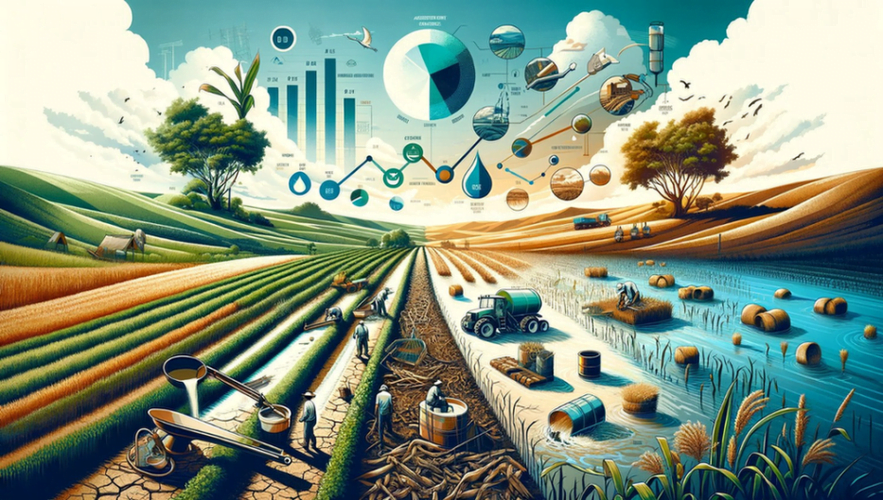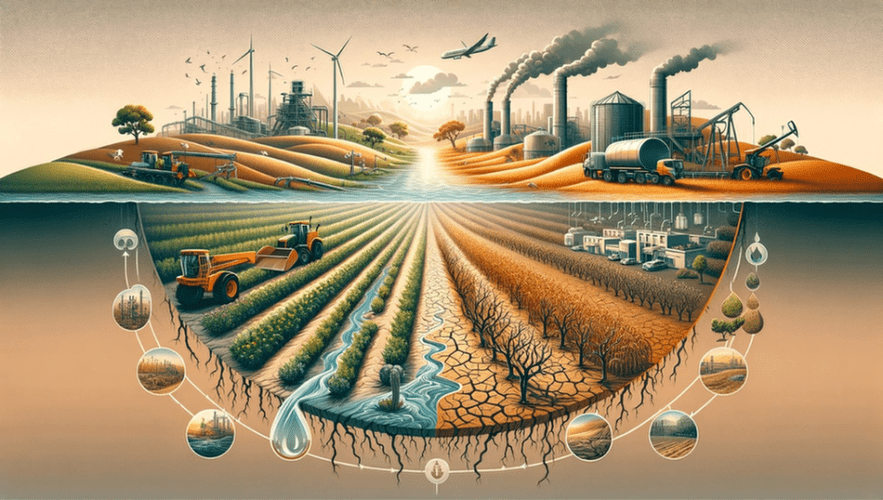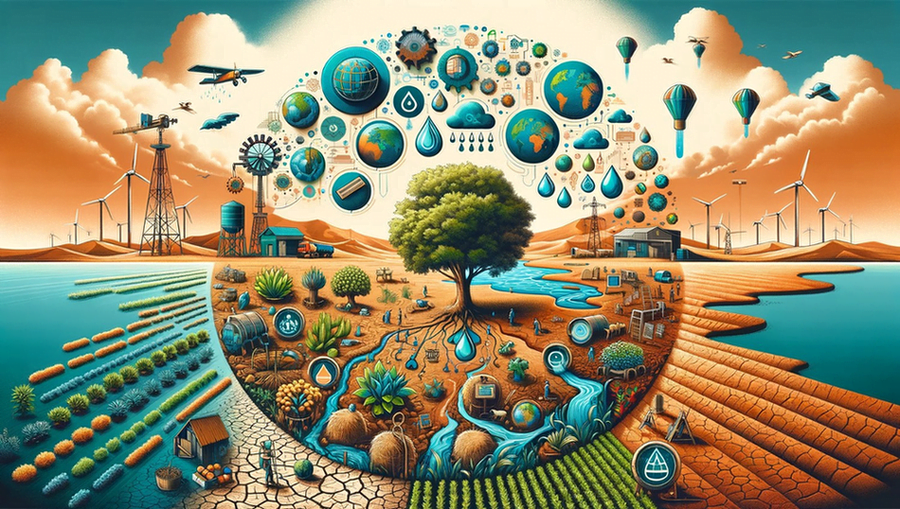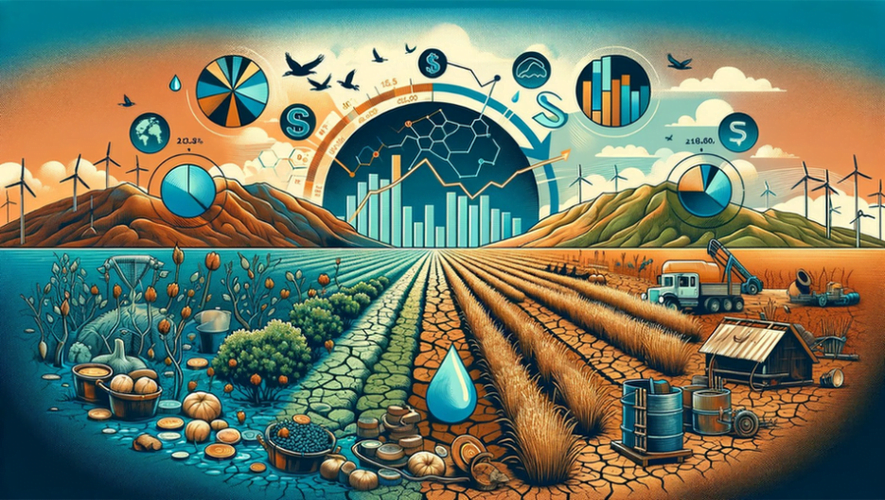Understanding the Importance of Water in Agriculture
For centuries, water has played a pivotal role in agricultural practices, providing the much-needed sustenance for plant growth and livestock rearing. It is not merely a medium for delivering necessary nutrients to plant roots, but it also plays a cardinal role in different biochemical processes that take place within the plant body. It enables the process of photosynthesis, a primary mechanism plants use for food production, where carbon dioxide is converted into glucose, a process that requires water as one of the key reactants.
The significance of water is also evident in livestock farming, as it is essential for maintaining the health and productivity of the animals. Water constitutes a large portion of an animal’s body weight and is critical for their physiological functions such as digestion, nutrient transportation, temperature regulation, and milk production. Moreover, the need for water goes beyond just plant and animal life, extending to the preparation and conditioning of soil, pest and weed control, and all post-harvest handling processes that underscore the seamless agricultural operations. Hence, water stands as the linchpin of successful agriculture.
The Relationship Between Water Availability and Agricultural Productivity
Water availability greatly influences agricultural productivity. It is a fundamental element driving all aspects of plant growth and development. Water, in combination with sunlight and carbon dioxide, aids in the photosynthesis process, which is the plant’s ability to convert light energy into chemical energy. This natural chemical process nourishes the plant, promoting growth and development. The productivity of a farm greatly depends on the amount of water available, both in terms of quantity and timing. Proper irrigation during dry periods can ensure a steady supply of nourishment, optimizing crop yield.
However, an excess of water can also be detrimental. Waterlogged fields can lead to a lack of oxygen reaching the plant roots, resulting in stunted growth. Additionally, the availability of clean, fresh water is paramount; contaminated water sources can negatively impact crop health and yield. Therefore, understanding the critical balance of water required for optimal plant growth is essential for maximizing productivity in agriculture. This balance is not static, as it varies according to the specific crop type, soil condition, and local climate. Understanding these variables helps farmers manage their water resources effectively, resulting in increased agricultural productivity.
Assessing the Impact of Water Shortage on Crop Production

Water shortage presents a salient challenge to crop production, significantly affecting not just the volume, but also the quality of yields. Drought conditions, for instance, inhibit plant growth, leading to smaller, less robust crops which may fail to meet market expectations or nutritional needs. The lack of sufficient water also restricts the planting and harvesting seasons, causing disruptions in supply chains due to unpredictability brought about by inconsistent crop readiness times.
The repercussions of water scarcity on crop production are not isolated to the farms. They also trickle down to the consumers, triggering a cascade of economic and socio-cultural impacts such as food shortages and price inflation which disproportionately affect the most vulnerable populations. Furthermore, water-deprived lands are susceptible to desertification, a phenomenon that degrades fertile soil, thereby exacerbating the challenges associated with maintaining productive farmlands in the face of climate change.
The Role of Water in Livestock Farming
Water contributes greatly to the vitality and productivity of livestock, providing the foundation for numerous biological functions. These include maintenance of body temperature, digestion, growth promotion, reproduction, milk and egg production, and even the prevention of disease. Effectively, the availability of quality water determines productivity of livestock, as animals require significant amounts and their water needs can often exceed their need for feed.
Sadly, a lack of cleanliness and the scarcity of water can bring about serious consequences for livestock farming. Unsanitary water can lead to the spread of diseases amongst the livestock, dramatically reducing their productivity rates and causing substantial financial loss to farmers. Furthermore, inadequate water supply can increase susceptibility to heat stress, especially in the case of dairy cattle, invariably affecting milk production. Therefore, the provision of clean and adequate water is paramount to maintaining healthy livestock and, consequently, an efficient and fruitful agricultural industry.
Consequences of Water Scarcity on Food Security
Water scarcity is one of the most pressing issues that significantly affects global food security. The direct link between the two can be observed chiefly on agricultural farm fields, which rely heavily on an adequately available water supply. It’s a well-known fact that agriculture, responsible for nearly 70% of global water withdrawals, functions as the world’s largest water consumer. However, when water becomes scarce, this need cannot be duly met, leading to reduced crop productivity and, consequently, food shortages. This situation is particularly troublesome in low-income countries that heavily depend on agriculture for their food supplies.
Moreover, the water deficiency not only impacts the quantity but also the quality of food produced. Due to lack of proper irrigation, farmers may opt to grow more drought-resistant crops that may not be as nutritious or beneficial as their water-dependent counterparts. Malnutrition and related health diseases can then become a rampant issue in regions where the effects of water scarcity are severe. The rampant spread of such concerns can lead to heightened food insecurity, further complicating the socio-economic condition of the affected regions. Thus, water scarcity, while seemingly a detached environmental issue, has profound and immediate implications for global food security.
The Ripple Effect of Water Shortages on Agro-based Industries

Water scarcity is emerging as a considerable challenge for many agro-based industries. These industries heavily depend on water not only for crop cultivation but also for various manufacturing processes. Even a slight decrease in water availability can disrupt the production line, leading to significant financial losses. Moreover, water shortages can also lead to the degradation of the quality of goods produced, tarnishing the reputation of the industry and eventually causing a decline in market demand.
On a wider scale, insufficient water supply to agro-based industries can have a far-reaching impact on local and national economies. Reduced outputs from these industries can lead to price increase of agricultural commodities and food products, exerting an upward pressure on the rate of inflation. Similarly, an increase in unemployment rates can be witnessed due to the lack of productivity in agro-based industries, adding to socio-economic woes. Considering these factors, it is evident that water availability is a crucial element in maintaining a sustainable agro-industrial sector.
How Irrigation Challenges Affect Regional Economies
Irrigation challenges have far-reaching effects on regional economies, particularly those predominantly reliant on agriculture as their main source of income and employment. Unpredictable weather conditions, recurrent droughts, and declining water availability often result in lesser yield. Consequently, it leads to a reduced volume of the commodities for trade and heightens the vulnerability of these economies to market fluctuations. In addition, the cost of implementing irrigation projects can be quite huge especially in drought-prone regions, thereby straining limited financial resources.
In parallel, the inability to ensure a constant water supply for irrigation cripples the agricultural sector, consequently reducing the cumulative regional output and gross domestic product (GDP). Reduced agricultural productivity directly correlates to destabilization in the food supply chain, leading to soaring food prices in local markets. Farmers’ income levels drop, plunging communities into poverty and causing migration to urban centers. The ripple effect of these irrigation challenges extends even further, impacting agro-based industries and disrupting regional economies at large.
Water Management Strategies in Drought-prone Areas

Water scarcity is a major concern that plagues many regions globally. Drought-prone areas, in particular, face grueling challenges in ensuring a steady supply of water for agricultural practices. Fortunately, different water management strategies have emerged to mitigate these challenges. These strategies are often designed based on the nature of the landscape, severity of the drought, and the type of crops or livestock nurtured within these regions. This includes techniques such as rainwater harvesting, constructing efficacious irrigation systems, implementing soil management practices, and adopting drought-resistant crop varieties.
Rainwater harvesting, for instance, is a potent technique where rainwater is collected, stored, and used for irrigation during periods of water scarcity. Implementing efficient irrigation systems has also found significant attention, as it promotes the sufficient utilization of water resources without squandering them. Drip irrigation and sprinkler systems are a few examples of such modern irrigation practices. Soil management is another crucial strategy that can help retain soil moisture and prevent soil degradation. This involves practices such as cover cropping, mulching, and composting, which not only preserves soil moisture but also enhances soil fertility. Furthermore, in a bid to save water, farmers are switching to drought-resistant crop varieties that can thrive with minimal water requirements. All these strategies unequivocally assert the innovative measures humans have undertaken to adapt agriculture to challenging environmental conditions.
- Rainwater Harvesting: This method involves the collection and storage of rainwater for future use. It is particularly beneficial in drought-prone areas as it provides access to water during periods of scarcity. The collected water can be used for various purposes such as irrigation, livestock watering, and even domestic use after proper treatment.
- Efficient Irrigation Systems: Implementing efficient irrigation systems like drip irrigation and sprinkler systems help in reducing wastage of water resources. These modern practices ensure that crops receive an adequate amount of water without overuse or misuse.
- Soil Management Practices: Techniques such as cover cropping, mulching, and composting are used to maintain soil moisture levels and prevent soil degradation. These practices not only conserve water but also improve the overall fertility and productivity of the soil.
- Drought-resistant Crop Varieties: By planting crop varieties that have a high tolerance for drought conditions, farmers can significantly reduce their dependence on regular watering schedules. Such crops require minimal amounts of water to grow effectively thereby saving valuable resources in arid regions.
In conclusion, these innovative strategies highlight human adaptability to challenging environmental conditions while ensuring sustainable agricultural practices. They offer feasible solutions towards managing scarce water resources efficiently in drought-prone areas worldwide.
What is the importance of water in agriculture?
Water is a crucial component in agriculture as it aids in the growth and development of crops and livestock. It is used for irrigation, livestock watering, processing of agricultural products, and even in the maintenance of landscapes.
How does water availability affect agricultural productivity?
Water availability directly impacts agricultural productivity. Adequate water supply ensures healthy growth of crops, leading to higher yields. Conversely, water scarcity can result in poor crop performance and reduced yields, thus hampering productivity.
What is the impact of water shortage on crop production?
Water shortage can severely affect crop production. It can lead to reduction in crop yield and quality. In severe cases, it can cause complete crop failure, leading to major losses for farmers.
How does water play a role in livestock farming?
Water is essential for livestock farming. It is needed for drinking, maintaining cleanliness and hygiene, and for food production for the animals. A shortage of water can impact the health of the livestock and reduce their productivity.
What are the consequences of water scarcity on food security?
Water scarcity can have a significant impact on food security. It can lead to decreased agricultural production, resulting in food shortages and increase in food prices. This can increase the vulnerability of poor and marginalized communities to hunger and malnutrition.
How do water shortages affect agro-based industries?
Water shortages can have a major impact on agro-based industries. These industries rely on water for irrigation, processing of agricultural products, and for maintaining the health of livestock. A shortage of water can lead to decreased productivity and increased costs, which can negatively impact the profitability of these industries.
What are the economic implications of irrigation challenges in regional economies?
Irrigation challenges can have a significant impact on regional economies. They can lead to reduced agricultural productivity, increased costs of production, and can affect the competitiveness of agro-based industries. This can result in job losses and economic instability in the region.
What are some effective water management strategies in drought-prone areas?
Some effective water management strategies in drought-prone areas include the use of drought-resistant crop varieties, implementation of efficient irrigation systems, rainwater harvesting, and promoting water conservation practices. It also involves proper planning and management of water resources to ensure their sustainable use.

